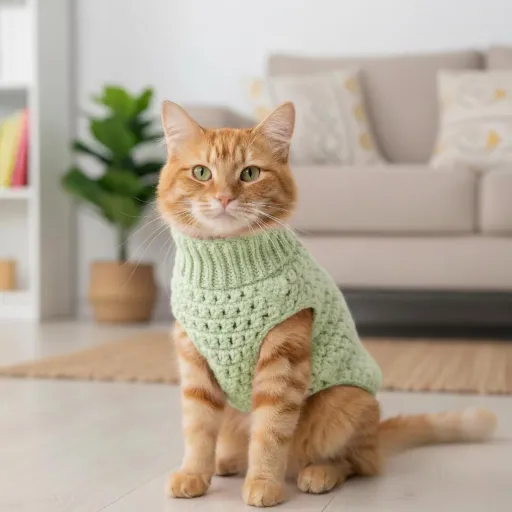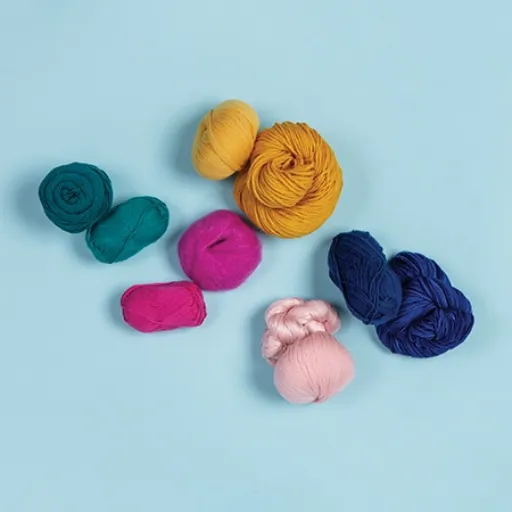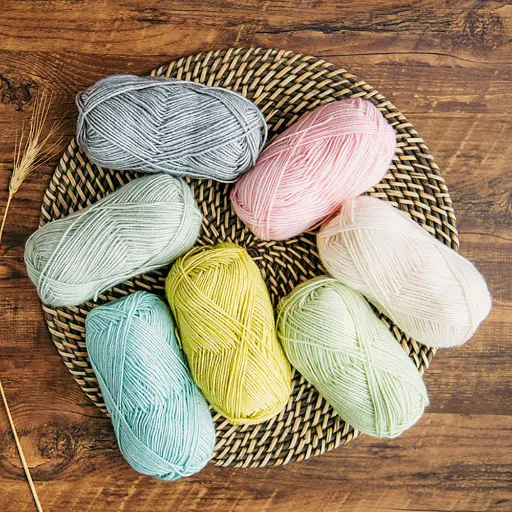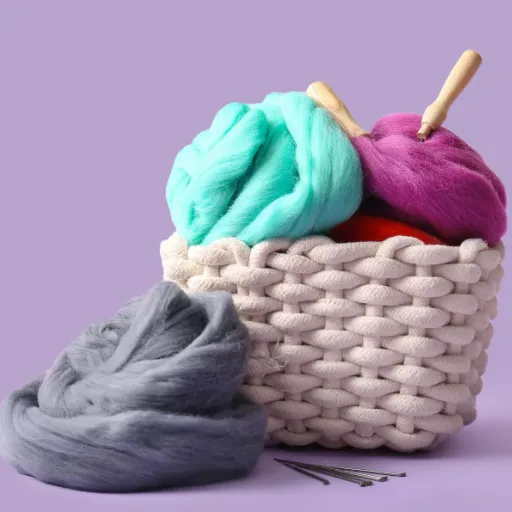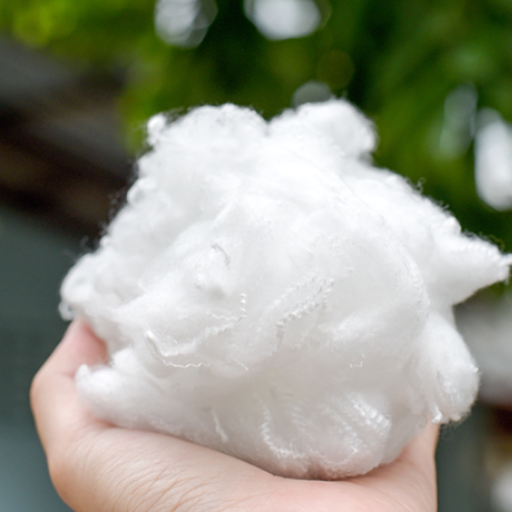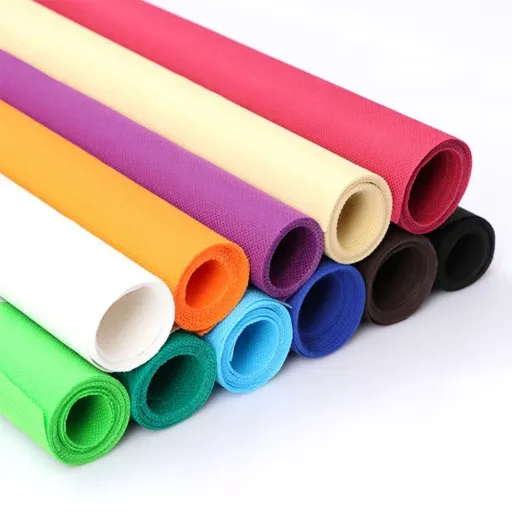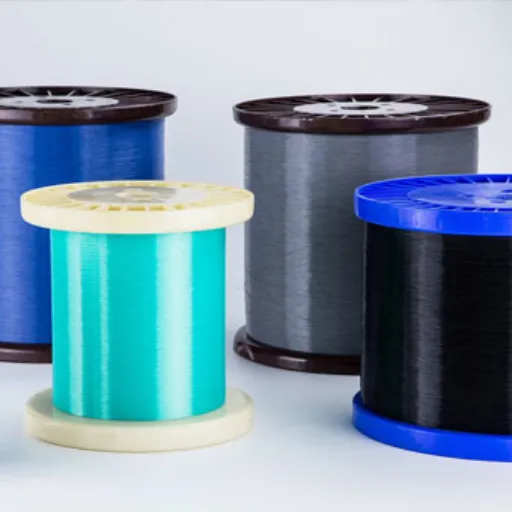An extremely popular and versatile textile, viscose is recognized for its soft finish, luxurious drape, and relatively inexpensive price tag. But have you ever really stopped to think about what is actually used in making viscose? The fashion industry and the home décor industry make widespread use of viscose; hence, its origin and production processes are often something unknown to many. This article will offer some insights into this fascinating material, examining its natural origins and synthetic production processes, and exploring its position between eco-friendly and mass-producible. Designers, budding stylists, sustainability advocates, or those simply curious about materials and their impact on our daily lives, this guide will help you understand the creation of viscose fabric and the reasons behind its worldwide acceptance and appreciation.
What is Viscose Fabric?
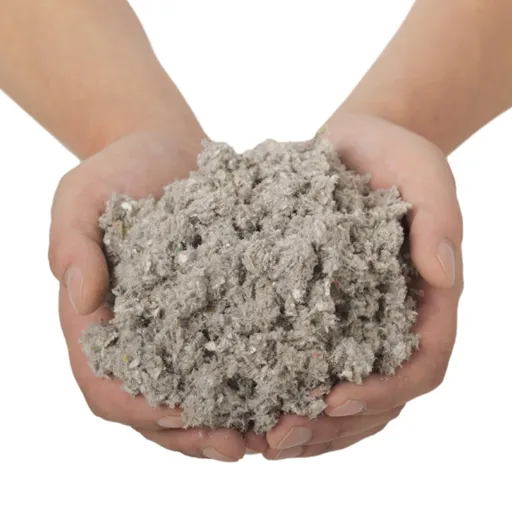
The viscose or rayon fabric is a semi-synthetic material, the cellulose part of which has been regenerated, usually from wood pulp or plant fibers. Comfortable, lightweight, and breathable, it is considered an affordable silk alternative due to its smooth texture and flow. Viscose is a versatile material often found in garments, upholstery, and various other textiles, offering both elegance and comfort.
Characteristics of Viscose Fabric
The viscose fabric has many characteristics that make it popular in various industries.
- Softness and Comfort: Viscose has a silken finish and is very comfy when worn or used for upholstery. The textile looks rich without being abrasive on the skin.
- Breathability: Air passes easily through it. Hence, it would be an excellent option for summer or for a garment meant to be worn for hours.
- Lightweight Nature: Lightweight viscose enhances drape and flow. This is perfect for real flowing garments or soft-touch furnishings.
- Versatility: Being receptive to dyes, it can attain bright and long-lasting colors. It is also blended with other fibers to impart properties required in diverse applications.
- Sustainability Concerns: Although made from natural cellulose, viscose production may involve chemicals that are harmful to the environment. Therefore, eco-friendly alternatives, such as lyocell, are emerging.
Viscose as a Semi-Synthetic Fiber
Viscose is classified as a semi-synthetic fiber because it is derived from natural cellulose, typically wood pulp, which undergoes chemical treatment to become a versatile material. Even with all the fame and applications, viscose is still scrutinized because of the environmental impact of its manufacture. The use of hazardous chemicals, such as carbon disulfide and sodium hydroxide, poses a threat to the ecosystem and poses a risk to factory workers unless these chemicals are appropriately managed and controlled. Unsustainable sources of raw materials could lead to deforestation and the loss of critical biodiversity areas.
The solutions developed in recent years instead aim to bring an end to these problems. Companies are investing in systems for closed-loop manufacture, which reclaim and reuse chemicals to reduce waste and pollution. Lyocell and alternative regenerated fibers are gaining popularity due to their eco-friendly production processes, making them viable solutions for the textile industry to become more sustainable. Therefore, through technology and good practices, the viscose industry is moving in the direction required by sustainable fashion and materials.
Raw Materials Used in Viscose Production
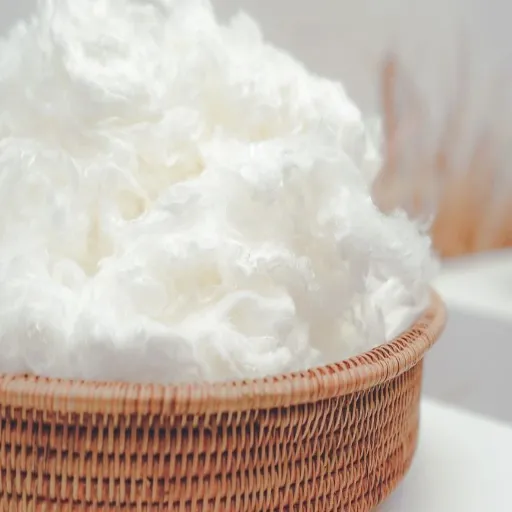
Cellulose serves as the primary raw material for viscose production, typically sourced from the wood pulp of trees such as eucalyptus, beech, and spruce. These types of trees are often selected due to their high cellulose content and fast growth rate. The chemicals sodium hydroxide and carbon disulfide are used in the process to convert the cellulose into a soluble compound, which can then be spun into fibers. Water also acts as a crucial medium during several stages of production. Responsible sourcing of these materials is imperative to minimize environmental damage and uphold sustainability within the textile industry.
Sources of Wood Pulp: Eucalyptus, Beech, and Bamboo
Eucalypts grow in various climates. Their rapid growth, coupled with high cellulose yield, made them the preferred species for wood pulp production. However, it does lead to biodiversity loss and increases water consumption; therefore, it requires careful management. Beech, on the other hand, comes from temperate forests, although it is mainly valued for its consistent fiber quality. These ecosystems require sustainable forestry methods, such as gentle selective logging and replanting. Quickly regenerating bamboo is another fast-growing grass recognized as a renewable alternative. Sustainable bamboo sourcing should consider land-use changes, as well as avoiding monocultures that could lead to soil degradation. Balancing production needs with ecological preservation is essential to the long-term sustainability of these resources for the textile industry.
Comparison with Other Materials: Viscose vs. Polyester
| Aspect | Viscose | Polyester |
|---|---|---|
| Source | Natural cellulose (wood pulp/bamboo) | Petroleum products |
| Feel | Soft, breathable, silk-like | Durable, wrinkle-resistant |
| Climate Suitability | Warm climates | Sports and outdoor wear |
| Environmental Impact | More eco-friendly but chemically intensive | Non-biodegradable, fossil fuel-dependent |
A significant difference exists between viscose and polyester in terms of sustainability, processing, and performance. Viscose is generally considered to be more environmentally friendly because it is derived from nature (cellulose from wood pulp or bamboo). However, its production entails chemically intensive processes that may cause environmental problems if improper measures are not taken. On the other hand, polyester is a synthetic material derived from petroleum products. It is very durable and resistant to wrinkles and shrinkage; however, it suffers from the environmental drawback of relying on fossil fuels and being non-biodegradable.
From the consumer’s perspective, viscose feels softer and more breathable on the skin and is typically well-suited for garments in warmer climates. In contrast, polyester is more rugged, excelling at wicking moisture away, and is often favored for sporting and outdoor wear. Hence, the choice of one material over the other depends on the application’s characteristics and the extent to which sustainability or performance weighs in the purchasing decision.
The Viscose Fabric Production Process
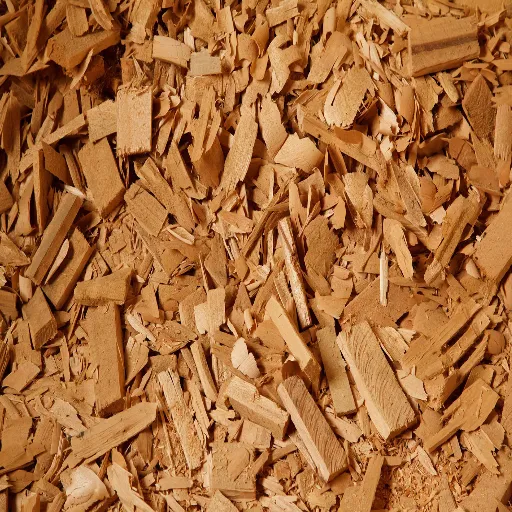
During the viscose fabric production, some significant technical steps must be followed:
-
1Sourcing Raw Material: At the beginning of the production process, natural cellulose is used, typically from wood pulp, such as bamboo, beech, or pine trees, chosen for their high cellulose content.
-
2Creating Cellulose Sheets: The wood pulp is treated chemically to break it down into soft, fibrous material, and in preparation for further processing, it is pressed into sheets.
-
3Alkali Treatment: The sheets of cellulose are then saturated with sodium hydroxide, allowing the cellulose to be manipulated and prepared for transformation.
-
4Xanthation: The alkali-free sheets react with carbon disulfide and form an intermediate called cellulose xanthate, which turns yellow.
-
5Formation of Viscose Solution: The cellulose xanthate is then dissolved in sodium hydroxide to form a viscose solution that resembles thick honey.
-
6Fiber Spinning: The viscose solution is forced through spinnerets into a bath of sulfuric acid, where it regenerates cellulose into solid fibers.
-
7Final Processing: The fibers are then washed, bleached, and sometimes treated with finishes to control their texture and quality before being spun into fabric.
Chemical Treatment in Viscose Manufacturing
The chemical treatment in viscose-making is essential in converting raw cellulose into fibers and ensuring consistent quality. The process is highly dependent on chemical reactions and begins with the alkalization of cellulose with sodium hydroxide, followed by its conversion into cellulose xanthate with carbon disulfide. These steps make the cellulose soluble and ready for further processing. A critical reaction, however, occurs during fiber spinning in the sulfuric bath, where the viscose is regenerated into solid cellulose fibers. Other chemicals, such as zinc sulfate and sodium sulfate, may be added to develop the fiber properties, including strength and luster. The quality of the viscose fabric and the sustainability of the manufacturing process are maintained carefully through the controls of these chemical treatments.
Spinning and Finishing Viscose Fibers
The moment the viscose fibers are regenerated during the spinning operation, finishing begins to impart the texture and properties they need. Washing, bleaching, and drying may be performed to remove impurities and enhance the appearance of the fibers. The finishing process may involve chemical treatments to impart the desired properties to the fibers, such as stain resistance, water repellency, or improved dye acceptance. Thus, traditional methods are combined with modern techniques, making it possible for viscose fibers to be utilized in many areas and to accommodate the diverse needs of the textile industry.
Environmental Impact of Viscose
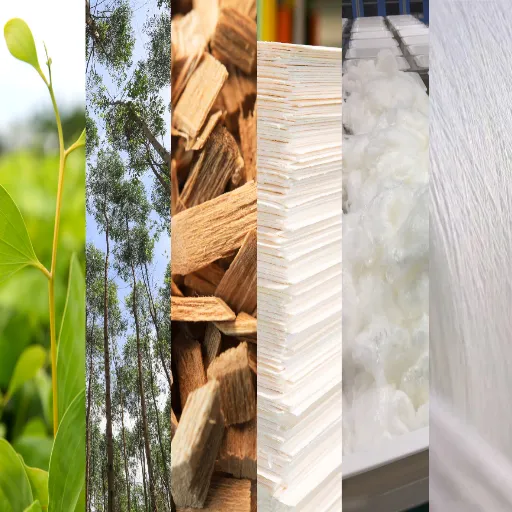
Viscose production has notable environmental implications. Cellulose, in this case, is obtained from wood pulp, and if not regulated, this could lead to deforestation. The process also employs some toxic chemicals, such as carbon disulfide, which can harm workers and the environment if not used responsibly. If this pollutant-laden wastewater is released from a factory into an ecosystem, it must be treated effectively. On the opposing side, measures are being taken to mitigate these impacts by sourcing wood from certified sustainable forests and implementing cleaner technologies to reduce their chemical use and emissions.
Is Viscose Biodegradable?
Good News: Viscose is biodegradable under certain conditions since it is made from natural cellulose derived from wood pulp. However, factors like temperature, humidity, available microbes, and any pretreatment applied to the viscose fiber during production determine the rate and extent of biodegradation.
Untreated or minimally treated viscose will probably break down easily enough compared to viscose that has been blended with synthetic fibers or treated with chemicals. Studies have shown that viscose in compost or soil with adequate moisture will degrade within a matter of weeks to a few months; however, when synthetic additives are present in fabric, the degradation period is typically longer.
Conventional vs. Sustainable Viscose Production
Conventional Production
- Energy-intensive processes
- Harmful chemicals (carbon disulfide, sodium hydroxide)
- Worker hazards
- Water contamination risks
- Non-sustainable forest sourcing
Sustainable Production
- FSC/PEFC certified forests
- Closed-loop processing systems
- Chemical recycling and reuse
- Reduced greenhouse gas emissions
- Safer chemical alternatives
The traditional viscose route, which involves highly energy-intensive processes, allows the use of harmful chemicals such as carbon disulfide and sodium hydroxide. Any mismanagement of these chemicals can lead to worker hazards, contamination of water bodies, and environmental degradation. Additionally, conventional production often relies on non-renewable resources, particularly in the sourcing of wood pulp, as it is extracted from forests that are not managed sustainably.
To address these issues, sustainable viscose production promotes environmentally friendly practices. For example, sustainable processes give due consideration to sourcing wood pulp from certified sustainable forests, such as those certified by the Forest Stewardship Council (FSC) or the Programme for the Endorsement of Forest Certification (PEFC). Furthermore, manufacturers are increasingly adopting closed-loop processing systems, which recycle chemicals and waste, preventing them from being discharged into the environment. New technologies being pursued aim to replace harmful substances with safer alternatives, thereby reducing the toxicity and energy consumption associated with production.
According to data, consumer preference for eco-friendly fibers is propelling rapid developments in the production of sustainable viscose. Reports have suggested that companies implementing sustainability measures have significantly reduced their greenhouse gas emissions and chemical waste compared to conventional producers, in both air and water. This trend reflects the growing importance of accountability and transparency in the textile industry.
Viscose in the Fashion Industry
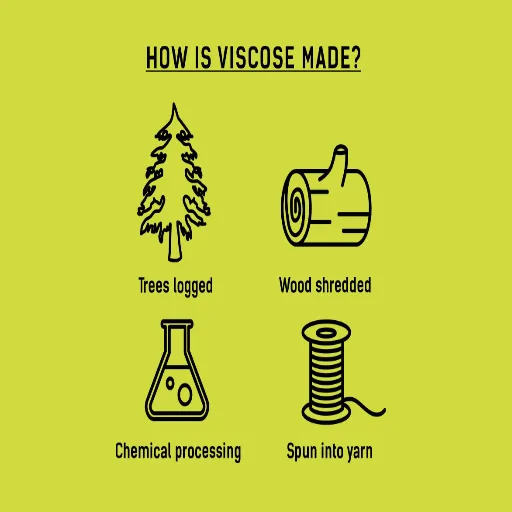
As in the fashion industry, the fiber gained importance due to its versatility and affordability. It is generally spun into thin, light, breathable, and soft fabrics with textures similar to those of natural fibres such as cotton or silk. Hence, it is mainly chosen for dressmaking, blouses, activewear, and linings. It can also be dyed easily, offering bright color possibilities to excite the designer’s imagination. However, due to environmental concerns, many brands have shifted their focus to environmentally sourced viscose, aiming to mitigate environmental degradation and meet consumers’ demand for ethical fashion.
Benefits of Using Viscose Fabric
A viscose fabric confers many general benefits. It feels soft and light, ensuring all-day comfort in any kind of garment. Due to its breathability, it enhanced air circulation, keeping me cool in hot weather. Additionally, viscose drapes beautifully, lending the clothes a richer and more elegant appearance. Since it readily absorbs dyes, it produces bright and enduring colors that complement any design.
Typical Applications of Viscose in Apparel
Lightweight Clothing
Dresses, blouses, and tops for warm weather
Elegant Garments
Flowing garments with a polished, exquisite feel
Linings
Silky feel against skin with perfect appearance
Blended Fabrics
Mixed with cotton or polyester for varied applications
Considered versatile, viscose has thus been deemed highly crucial for the fashion and textile industries. Among its numerous typical applications is the creation of lightweight, breezy clothing, typically associated with dresses, blouses, and tops. Because it drapes elegantly, one must resort to it when creating garments with that polished, exquisite feel. It is often used as a lining due to the silky feel of the stitch; it has to feel good against the skin and look perfect on the reverse. Viscose is blended with cotton or polyester to provide strength for varied applications, including activewear, comfortable casual wear such as jeans, and t-shirts. Broad uses and all-around flexibility have made viscose a popular fabric in both high fashion and casual wear.
Reference Sources
These five professional and authoritative reference sources can be used to verify the article’s content on viscose production. These sources are academic and research-based concerning viscose production issues, sustainability, and innovations:
- World Production of Viscose Fibres
This paper outlines the historical considerations for the development of the industry, with trends in viscose production. - Towards Sustainable Viscose-to-Viscose Production: Strategies for Recycling of Viscose Fibres
The focus of this paper is on the recycling of viscose fibers for sustainable production that maximizes waste reduction. - Low Waste or Waste-Free Technology—A Basis for the Development of Viscose Fibre Manufacture
The article focuses on technological developments towards low-waste or waste-free manufacturing of viscose fibers from an environmental perspective. - Fundamental Problems in Scientific-Technical Progress in the Manufacture of Viscose Textile Fibre
This one examines the challenges and advancements in the scientific and technical development of viscose textile fibre manufacture. - Natural Dye Extracted from Triadica Sebifera in Aqueous Medium for Sustainable Dyeing and Functionalizing of Viscose Fabric
This study focuses on the sustainable dyeing method for viscose fabric, utilizing natural dyes and their beneficial environmental effects.
Frequently Asked Questions (FAQs)
Common Questions About Viscose Fabric
What is viscose made from?
Viscose is made from regenerated cellulose, primarily derived from natural materials like wood pulp. The wood pulp is processed through a series of steps to produce a semi-synthetic fabric that is both versatile and breathable.
How is the viscose process conducted?
The viscose process involves dissolving wood pulp in a chemical solution to create a viscous solution. This solution is then extruded through spinnerets to form fibers, which are subsequently solidified and spun into yarn for fabric production.
What are the types of rayon fabrics?
Rayon comes in several types, with viscose rayon being the most common. Other types include modal and lyocell, each differing in their production processes and fiber characteristics.
Is viscose a sustainable fabric?
Viscose can be considered a sustainable fabric when produced using environmentally friendly practices. However, conventional viscose manufacturing may involve harmful chemicals and significant air emissions, making it crucial to choose sustainably produced options.
What is the difference between viscose and cotton?
Viscose and cotton are both breathable fabrics, but they differ in composition. While cotton is a natural fiber, viscose is a semi-synthetic fabric made from cellulose. This gives viscose a silk-like feel, making it a popular alternative to silk in clothing.
Can viscose clothing shrink?
Yes, viscose clothing can shrink, especially if not cared for properly. It is recommended to hand-wash viscose garments and avoid hot water to minimize shrinkage and preserve the fabric’s integrity.
What are the benefits of bamboo viscose?
Bamboo viscose is made from bamboo pulp and offers several benefits, including being biodegradable and incredibly soft. It also features moisture-wicking properties, making it an excellent choice for activewear and comfortable clothing.
Where can I find viscose fabric?
Viscose fabric is widely available in fabric stores and online. When purchasing viscose, look for labels indicating the type of rayon and the manufacturing practices to ensure you’re selecting high-quality and sustainable options.
Is viscose fabric breathable?
Yes, viscose fabric is known for its breathability, making it an ideal choice for warm-weather clothing. Its lightweight nature allows for good air circulation, providing comfort during hot days.








